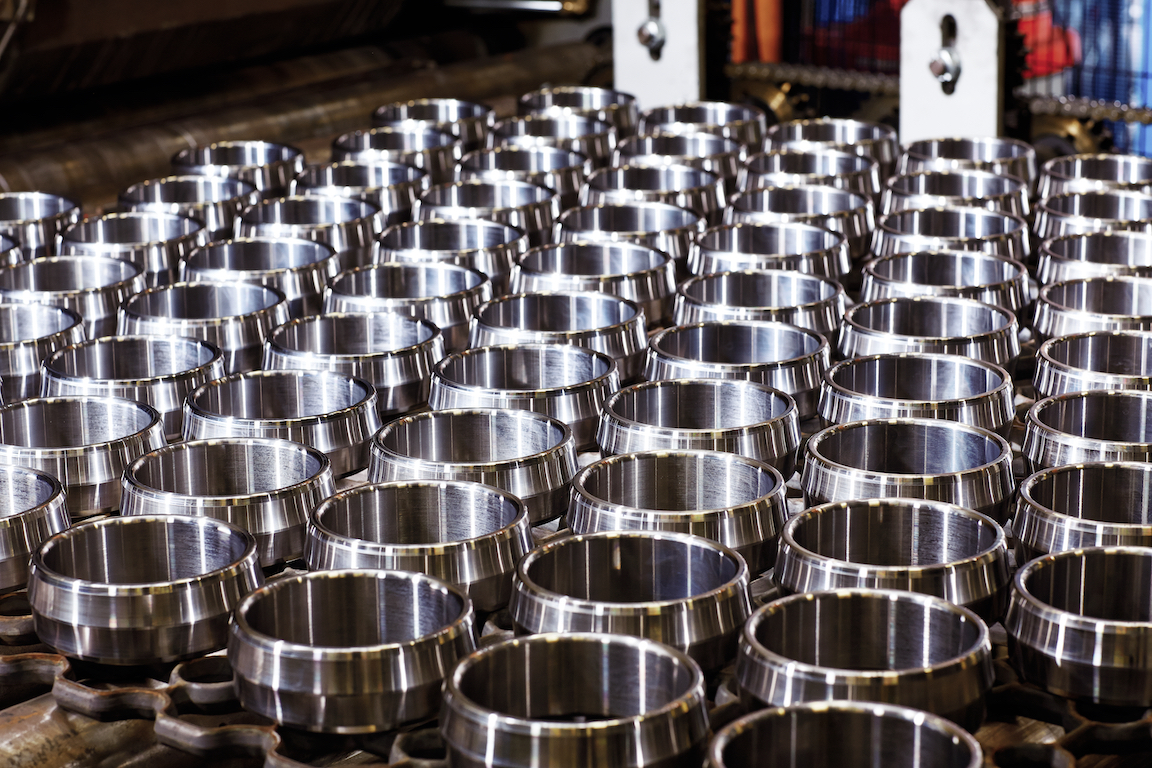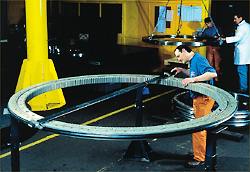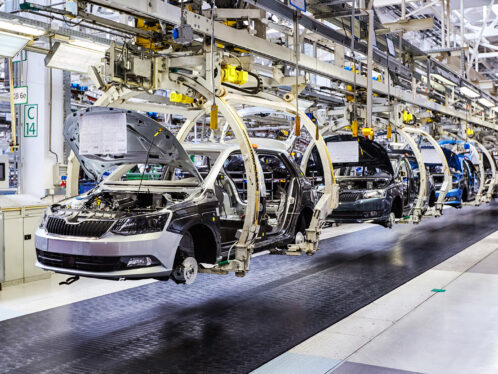
Harbour cranes give China a lift
A Shanghai manufacturer of port machinery helps China develop transports for its domestic shipping. But exports are also firmly in focus.
Summary
Large cranes need large bearings
For about five years, SKF has supplied the Shanghai Port Machinery Plant with large size bearings, including slewing bearings with a diameter of more than three metres, for all port and container cranes being exported. “We have no foreign competition for this kind of bearing,” says Xin Weimin, coordinator of distribution development at the Shanghai office of SKF. “We have an average of five or six projects a year with a turnover of around 200,000 U.S. dollars.”
All the SKF bearings are made in France, Sweden or Germany. For the domestic market, SPMP uses domestically produced bearings. “SKF bearings have three advantages over domestic ones,” says Karmin Wang, sales and application engineer at SKF. “First, we use better quality steel. Second, our design is better. Third, our quality and quality control is much better.” The main disadvantage for SKF is the price difference: SKF bearings are more expensive than the domestic ones.
A crane for every purpose
Shanghai Port Machinery Plant is an exporting company that falls under the jurisdiction of the Ministry of Communication. Founded in 1885, it was formerly named Gong Mao Machine and Ship-building Plant. To meet the requirements of port development in China, SPMP was reconstructed in 1960 and began specialising in the study, development and manufacture of port-handling equipment.
Currently, SPMP has about 3,500 employees, and the company is the largest Chinese manufacturer of port machinery. Its main products are portal cranes, bulk ship loaders and unloaders, floating cranes and large-sized overhead cranes.
In recent years, more attention has been paid to the development of seaborne machinery. SPMP exports part of its production, mainly to Pacific Rim countries. Since the 1960 reconstruction, 11 joint-operation plants and one joint venture have been established in Shanghai, Changzhou, Shuzhou, Wujing and other cities. In 1996, the overall value of fixed assets was 239 million yuan (US$ 29 million) and the net value was 189 million yuan (US$ 23 million). The same year, Shanghai Port Machinery Co. Ltd. was formed and introduced on the Shanghai Security Exchange.
A Shanghai manufacturer of port machinery helps China develop transports for its domestic shipping. But exports are also firmly in focus.
The Shanghai Port Machinery Plant is China’s biggest producer of port equipment and is instrumental to an essential part of the country’s economic development: transportation by ship.
SPMP was established in 1885, but it wasn’t until much later that it began its current life as a successful builder of port equipment. “Before 1960 our company was involved in ship repairs,” says project manager Chen Guang Song. “Only in the 1960s did we start to focus on port equipment.”
Initially, SPMP cooperated with foreign companies to bring up-to-date technology to the company, but now it has its own design department. Hundreds of engineers and technicians work on new designs to keep up with world developments.
A few years ago SPMP had 4,000 employees. Today the company officially employs 3,500. That figure includes pensioners and others who don’t do any productive work, but the number is going down. Now about 2,000 workers do the production work, while an additional 800 engineers and technicians work on the design and development of new products – a fairly sound proportion in a city where some state-owned enterprises employ more pensioners than workers.
A few dozen orange port cranes under construction take up most of the quay side situated within SPMP’s factory grounds. One of them is ready to be hoisted aboard a ship at the Huang Pu river for delivery to a Chinese customer. Seventy standard port cranes a year can be assembled at this site, while the company can produce 10 container cranes at another site.
SPMP has about five years of experience in exporting, but those sales proved to be rather unpredictable. The company has sold port equipment to Vancouver, Canada, but most of its sales concentrate on Asia, including Indonesia, Thailand, Singapore and Hong Kong. A substantial domestic market partially shelters the enterprise from the fallout of the Asian economic crisis that hurt its exports. Currently, about 30 percent of SPMP’s products are sold outside China.
While the company’s export products have to meet international standards, the domestic market still prefers a lower price to high quality. So, although strong domestic demand might save SPMP from backlash from the Asian financial crisis, this situation might leave foreign suppliers empty-handed.
“As suppliers, we are dependent on SPMP’s sales for export,” says Karmin Wang, sales and application engineer with SKF in Shanghai. “When they can export, we can sell our bearings. When they cannot sell, we do not sell.”
But SPMP’s Chen is optimistic about the future of his company in China. He also thinks that Chinese customers will slowly but steadily raise their quality demands.
Fons Tuinstra
a business journalist based in Shanghai
photo Fritz Hoffmann





